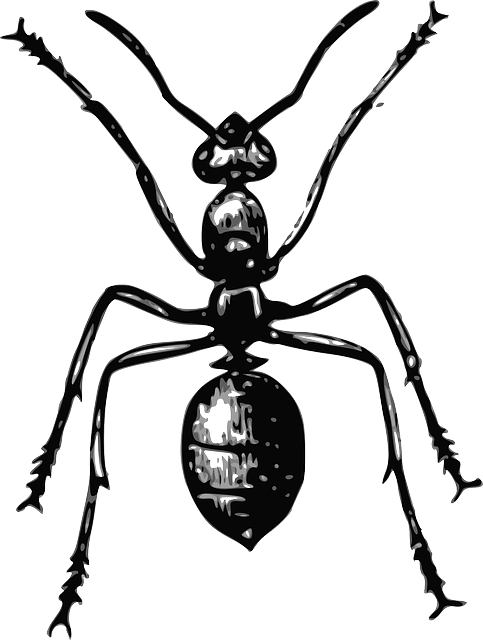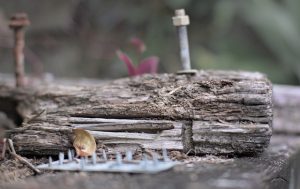In Tucson, effective termite control is a strategic investment for homeowners to protect their properties from damage caused by these pests. The climate and local termite species necessitate tailored approaches, with various control methods ranging from spot treatments, bait stations, fumigation, to comprehensive perimeter treatments, each affecting cost differently. Local experts in Tucson provide personalized solutions, considering factors like the property's size, design, and infestation severity. The choice between one-time treatments or ongoing bait systems also influences expenses. Costs are further affected by the need for specialized techniques and materials due to the arid conditions and regulations enforced in the Sonoran Desert. Homeowners should consult with experienced termite control professionals in Tucson to balance cost-effectiveness with protection, focusing on long-term solutions that minimize damage and reduce repair costs. The nuanced approach required for termite control in Tucson underscores the importance of considering local conditions and expert advice when determining the most suitable and financially responsible strategy for managing these persistent pests.
When confronted with a termite infestation, homeowners in Tucson face a complex array of factors that influence treatment costs. This article dissects five pivotal elements affecting the expense of termite control in Tucson, offering insight into the intricacies and cost considerations involved. Understanding structural vulnerabilities, the scope of infestation, and the species at play, alongside adherence to local regulations and the expertise of professionals, are crucial for effective and cost-efficient termite management solutions in this region.
- Assessing Structural Vulnerabilities and Size of Infestation for Termite Control in Tucson
- The Role of Treatment Methods in Determining Costs for Effective Termite Control, Tucson
- Impact of Termite Species, Local Regulations, and Professional Expertise on Termite Control Costs in Tucson
Assessing Structural Vulnerabilities and Size of Infestation for Termite Control in Tucson

In Tucson, where termites are a persistent challenge, understanding the structural vulnerabilities and the extent of an infestation is crucial for effective termite control. A thorough inspection reveals how accessible and conducive different areas of a structure are to termite activity. Factors such as wood-to-ground contact, moisture levels, and the presence of cellulose-rich materials can significantly influence a structure’s susceptibility to termites. Homeowners in Tucson should be particularly mindful of these vulnerabilities, given the region’s climate and the types of wood and building materials commonly used.
The size of an infestation also plays a pivotal role in determining the cost of termite control in Tucson. A small, localized issue can often be addressed with targeted treatments like spot treatments or bait stations. However, a widespread or severe infestation may necessitate more extensive measures such as fumigation or full perimeter treatments. The complexity of treatment increases with the size of the infestation, and so do the associated costs. Termite control companies in Tucson, adept at assessing both structural vulnerabilities and infestation size, offer tailored solutions that effectively manage termite threats while providing cost-effective options for homeowners.
The Role of Treatment Methods in Determining Costs for Effective Termite Control, Tucson

In Tucson, effective termite control is a critical investment for homeowners to protect their properties from these destructive pests. A key factor influencing the costs associated with termite treatment is the method of treatment employed. Traditional liquid treatments, where a chemical barrier is applied around and within the structure, tend to be more expensive than less invasive methods like bait stations or heat treatments. The complexity of the property’s layout, such as its size, design, and the extent of infestation, also plays a significant role in determining costs. Larger structures with complex architectural features require more labor and materials, driving up the overall treatment cost. Additionally, the type of chemical or non-chemical treatment chosen can vary significantly in price; while some treatments may be a one-time application, others, like bait systems, involve ongoing monitoring and maintenance costs, further impacting the total expense. It’s important for Tucson homeowners to consider these factors and consult with experienced pest control professionals to determine the most effective and cost-efficient termite control solutions tailored to their specific needs. Termite control in Tucson necessitates a strategic approach that balances efficacy with budgetary constraints, ensuring long-term protection against these wood-destroying insects.
Impact of Termite Species, Local Regulations, and Professional Expertise on Termite Control Costs in Tucson

In Tucson, the specific termite species infesting a property play a significant role in determining the costs associated with termite control. Different species require tailored treatment methods; for instance, drywood termites, common in the region, often necessitate more expensive fumigation processes compared to subterranean varieties, which may be addressed through baiting systems or liquid treatments. The geographic location and climate of Tucson also influence these costs, as the arid conditions can affect treatment duration and frequency. Moreover, the Sonoran Desert’s unique environment may necessitate specialized techniques and materials that are not standard in other regions, further impacting the overall cost.
Local regulations in Tucson also contribute to the variability in termite control expenses. The city has specific guidelines and permits required for chemical applications and structural treatments. Compliance with these regulations is non-negotiable, ensuring that all termite control practices are safe and effective, but also adding to the bottom line. Homeowners must consider the legal requirements when budgeting for treatment. Additionally, the level of professional expertise brought to a termite infestation can significantly affect the cost of treatment in Tucson. Experienced professionals with a deep understanding of local termite behaviors and the most effective control measures will likely charge more than those less established or specialized. However, investing in expert services often yields better outcomes, minimizing potential damage and saving costs in the long run. Termite control in Tucson is thus not a one-size-fits-all endeavor; it requires careful consideration of species characteristics, regulatory compliance, and professional expertise to ascertain the true cost of safeguarding homes from these persistent pests.
In summary, effective termite control in Tucson necessitates a comprehensive approach that accounts for various factors impacting treatment costs. Homeowners must consider the extent of infestation, structural vulnerabilities, and the specific termite species at play. The chosen treatment method significantly influences expenses, with advanced solutions often commanding higher fees. Local regulations and the expertise of the professional handling the infestation also contribute to the overall cost. Prospective clients in Tucson seeking termite control services should weigh these elements to make informed decisions. By understanding these key factors, residents can better anticipate costs associated with safeguarding their homes from termites and select the most appropriate and cost-effective treatment options available.
